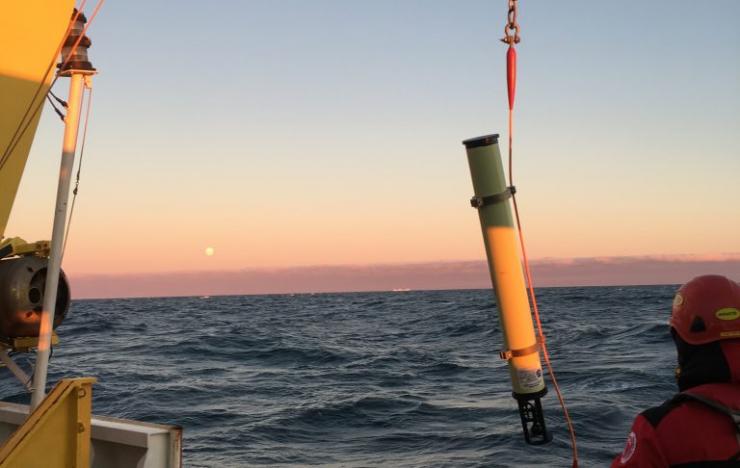The PMEL Acoustics Program is back in the Ross Sea in Antarctica replacing six hydrophones that record icequakes, iceberg tremors and other naturals sounds near the Drygalski and Nansen Ice Shelves. The data collected from these hydrophones over the last four years will allow the Acoustics program to characterize the soundscape of the Terra Nova Bay polynya and to assess ice flow dynamics, as well as marine mammal presence/distribution in the newly formed Antarctic Marine Protected Area.
Ice shelves are permanent floating sheets of ice that connect to a landmass and are mostly found around the coast of Antarctica. They also slow the rate of ice flow from glaciers and ice streams coming into the ocean from the interior of the land. If an ice shelf collapses, then the glaciers flow more quickly out to the ocean and can accelerate sea level rise. Sea shelves can also calve, or split apart, as seen when two iceberg broke away from the Nansen ice shelf in April 2016 due to the largest low pressure storm system in more than a year that ultimately caused the icebergs to break free of the Nansen shelf.
The PMEL Acoustics Program has been collaborating with the Korea Polar Research Institute (KOPRI) for several years on multiple projects in Antarctica.



